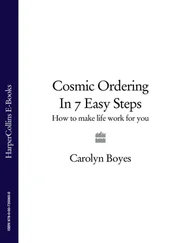Candace Wheeler - How to make rugs
Здесь есть возможность читать онлайн «Candace Wheeler - How to make rugs» — ознакомительный отрывок электронной книги совершенно бесплатно, а после прочтения отрывка купить полную версию. В некоторых случаях можно слушать аудио, скачать через торрент в формате fb2 и присутствует краткое содержание. Жанр: foreign_antique, foreign_home, Технические науки, на английском языке. Описание произведения, (предисловие) а так же отзывы посетителей доступны на портале библиотеки ЛибКат.
- Название:How to make rugs
- Автор:
- Жанр:
- Год:неизвестен
- ISBN:нет данных
- Рейтинг книги:4 / 5. Голосов: 1
-
Избранное:Добавить в избранное
- Отзывы:
-
Ваша оценка:
- 80
- 1
- 2
- 3
- 4
- 5
How to make rugs: краткое содержание, описание и аннотация
Предлагаем к чтению аннотацию, описание, краткое содержание или предисловие (зависит от того, что написал сам автор книги «How to make rugs»). Если вы не нашли необходимую информацию о книге — напишите в комментариях, мы постараемся отыскать её.
How to make rugs — читать онлайн ознакомительный отрывок
Ниже представлен текст книги, разбитый по страницам. Система сохранения места последней прочитанной страницы, позволяет с удобством читать онлайн бесплатно книгу «How to make rugs», без необходимости каждый раз заново искать на чём Вы остановились. Поставьте закладку, и сможете в любой момент перейти на страницу, на которой закончили чтение.
Интервал:
Закладка:
Candace Wheeler
How to make rugs
FOREWORD.
HOME INDUSTRIES AND DOMESTIC MANUFACTURES
The subject of Home Industries is beginning to attract the attention of those who are interested in political economy and the general welfare of the country, and thoughtful people are asking themselves why, in all the length and breadth of America, there are no well-established and prosperous domestic manufactures.
We have no articles of use or luxury made in homes which are objects of commercial interchange or sources of family profit. To this general statement there are but few exceptions, and curiously enough these are, for the most part, in the work of our native Indians.
A stranger in America, wishing—after the manner of travelers—to carry back something characteristic of the country, generally buys what we call “Indian curiosities”—moccasins, baskets, feather-work, and the one admirable and well-established product of Indian manufacture, the Navajo blanket. But these hardly represent the mass of our people.
We may add to the list of Indian industries, lace making, which is being successfully taught at some of the reservations, but as it is not as yet even a self-supporting industry, the above-named “curiosities” and the Navajo blanket stand alone as characteristic hand-work produced by native races; while from our own, or that of the co-existent Afro-American, we have nothing to show in the way of true domestic manufactures.
When we contrast this want of production with the immense home product of Europe, Asia, parts of Africa, and South America—and even certain islands of the Southern Seas—we cannot help feeling a sort of dismay at the contrast; and it is only by a careful study of the conditions which have made the difference that we become reassured. It is, in fact, our very prosperity, the exceptionally favourable circumstances which are a part of farming life in this country, which has hitherto diverted efforts into other channels.
These conditions did not exist during the early days of America, and we know that while there was little commercial exchange of home commodities, many of the arts which are used to such profitable purpose abroad existed in this country and served greatly to modify home expenses and increase home comforts. To account for the cessation of these household industries, it is only necessary to notice the drift of certain periods in the short history of America’s settlement and development.
We shall see that the decline of domestic manufactures in New England and the Middle States was coincident with two rapidly increasing movements, one of which was the opening and settlement of the great West, and the other the establishment of cotton and woolen mills throughout the country.
In short, the abundant acreage of Western lands, fertile beyond the dreams of New England or Old World tillers, threw the entire business of production or family support upon the man. The profit of his easily acquired farm land was so great and certain that it became almost a reproach to him to have his womenkind busy themselves with other than necessary household duties.
The cotton and woolen mills stood ready to supply the needed material for clothing, and it was positive economy to push the spinning-wheel out of sight under the garret eaves and chop up the bulky loom for firewood. The wife and daughters might reputably cook and clean for the men whose business it was to cover the black acres with golden wheat, but spinning and weaving were decidedly unfashionable occupations. Even the emigrants from countries where the spinning and weaving habit was an inheritance as well as a necessity, were governed by the custom of the country, and devoted the entire energy of the family to the raising of crops.
It is, in fact, owing to fortunate circumstances that, if we except the mountain regions of the South, there are no longer farmhouse or domestic manufactures in America.
This, as I have said, only goes to prove the hitherto unexampled prosperity of the country. In fact, the absence of these very industries means that there are greater sources of profit within the reach of farming households.
This being so, it is natural to ask, why the re-establishment of farmhouse manufactures, or the encouragement and development of them, is a desirable movement.
There are exceedingly good individual and personal reasons; and there are also commercial and national ones, which should not be ignored.
All farmers are not successful. There are many poor as well as rich ones; and the wife of a poor farmer has less pecuniary independence, less money to spend, and fewer ways of gaining it, than any other woman of equal education and character in America.
A poor farmer is often obliged to pay out for labour, fencing, stock, insurance and taxes every dollar gained by the sale of his crops, and if by good luck or good management there should be a small excess, he is apt to hoard it against unlooked-for emergencies. This, at first enforced economy, grows to be the habit of his life, so that even if he becomes well-to-do, or even rich, he distrusts exceedingly the wisdom of any expenditure save his own.
A mechanic, or a man in any small line of business, must trust his wife with the disbursement of a certain part of the family income. It passes through her hands in the way of housekeeping, and the management of it exercises and develops her faculties; but the wife of the farmer has no such interest. The farm is expected to supply the family living, and this blessed fact becomes almost a curse when it deprives the wife of the mental stimulus incident to the management of resources.
Added to this there is often, at least through the winter, partial or complete isolation from neighbourly or public interests. The great crops of the country are produced under circumstances which necessitate distance from even the most limited social centres, and that the farmer’s wife suffers from this we know, not only from observation, but from the statistics of insane asylums. And here I am tempted to quote from a letter of a close student of farmhouse life in the West. She writes:
“That the farmer himself, as isolated and hard worked, makes no such record, I believe due to the mental tonic, the broadening influence that comes from a sense of responsibility in life’s larger affairs. The woman works like a machine, irresponsible as to final results; the man like a thinking, planning, responsible, independent human being.”
This seems to me a very fair statement of the case. The woman, who misses social companionship, and who has not the saving influence of administration and responsibility even in her own household, is narrowed to a very small point in life’s affairs, and it is inevitable that she should suffer from it. The variety of her work also has dwindled. Cooking and house-cleaning follow each other in monotonous routine, with too much of it at planting and harvest seasons and too little at others. She has not even the pleasure of comparison and emulation in her daily work; it neither exercises her faculties nor stimulates her thought.
During the winter months she has abundant leisure for a harvest of her own, in some interesting manufacture adapted to her education and circumstances, and in the prosecution of these she would be brought into a bond of common interest with other women. So far I have spoken only of the individual and personal reasons for which certain domestic and artistic industries well might be encouraged; but the public and economic reasons are easy to find.
In looking at the variety and bulk of our national imports, we may be surprised to see how large a proportion of them are of domestic origin. In fact, nearly everything which comes under the head of artistic products is the result of domestic industry. The beauty and simplicity of many of these things is surprising, and yet they have required neither unusual talent or careful training. They are simply the result of the habit of production, and their value is in the personal expression we find in them. They have always this advantage over mechanical manufacture, and can be safely relied upon to find a market in the face of close mechanical imitation.
Читать дальшеИнтервал:
Закладка:
Похожие книги на «How to make rugs»
Представляем Вашему вниманию похожие книги на «How to make rugs» списком для выбора. Мы отобрали схожую по названию и смыслу литературу в надежде предоставить читателям больше вариантов отыскать новые, интересные, ещё непрочитанные произведения.
Обсуждение, отзывы о книге «How to make rugs» и просто собственные мнения читателей. Оставьте ваши комментарии, напишите, что Вы думаете о произведении, его смысле или главных героях. Укажите что конкретно понравилось, а что нет, и почему Вы так считаете.












